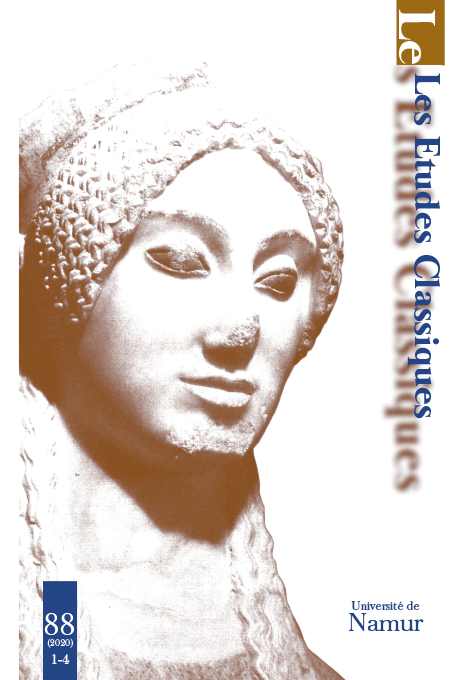 previous article in this issue previous article in this issue | next article in this issue  |

Preview first page |
Document Details : Title: De xylesphongio et quibusdam aliis rebus Subtitle: Quelques notes à propos d'une lettre de Claudius Terentianus (P.Mich. VIII 471) Author(s): SELDESLACHTS, Herman Journal: Les Études Classiques Volume: 89 Issue: 1-4 Date: 2021 Pages: 301-334 DOI: 10.2143/LEC.89.1.3290431 Abstract : Cet article vise à clarifier quelques problèmes d’interprétation dans l’une des lettres latines des archives de Claudius Terentianus (début du IIe siècle après J.-C.). Parmi nos principales conclusions, on notera l’explication de xylesphongium comme une altération de xylosp(h)ongium par association avec *espongia, la prononciation courante de spongia, et donc comme une autre preuve de l’existence, dans le latin parlé de cette époque, d’une voyelle prothétique qui rend compte aussi de la confusion des verbes spectare et exspectare dans la même lettre. Il est également proposé d’expliquer l’utilisation de praeesse pour adesse comme un exemple typique d’interférence linguistique dans un environnement bilingue et de voir dans lentiamina pour linteamina le résultat indirect d’un réemprunt au grec. This paper focuses on some remaining problems of interpretation in one of the Latin letters of the archive of Claudius Terentianus (early 2nd century AD). Among our principal findings, one may note the explanation of xylesphongium as an alteration of xylosp(h)ongium by association with *espongia, the spoken form of spongia and thus as another proof of the existence in contemporary spoken Latin of a pro(s)thetic vowel which also accounts for the confusion of the verbs spectare and exspectare in the same letter. It is also argued that the author’s use of praeesse for adesse can be regarded as a typical instance of linguistic interference in a bilingual setting and that lentiamina for linteamina can possibly be accounted for by assuming a reborrowing from Greek. |
|


